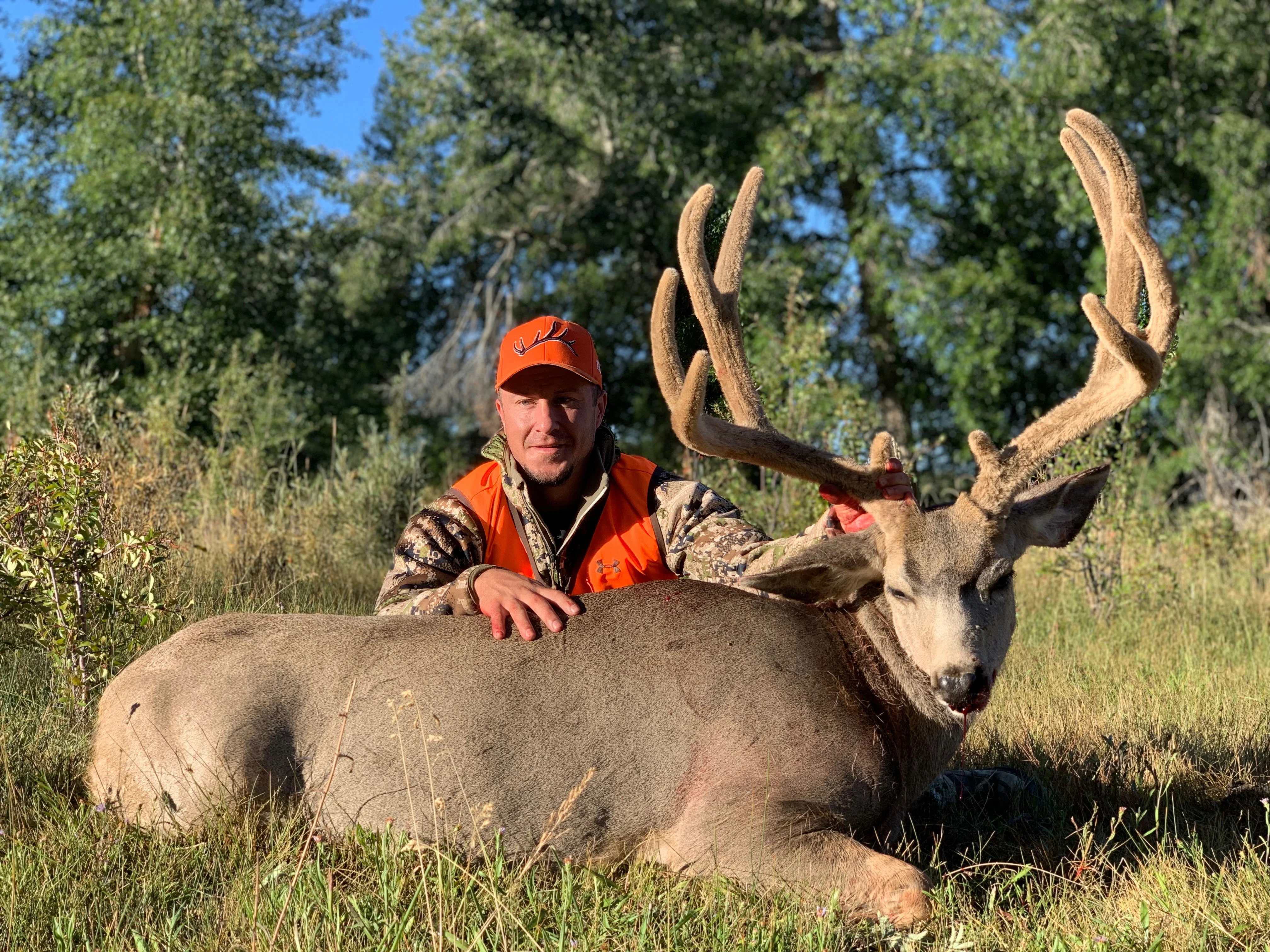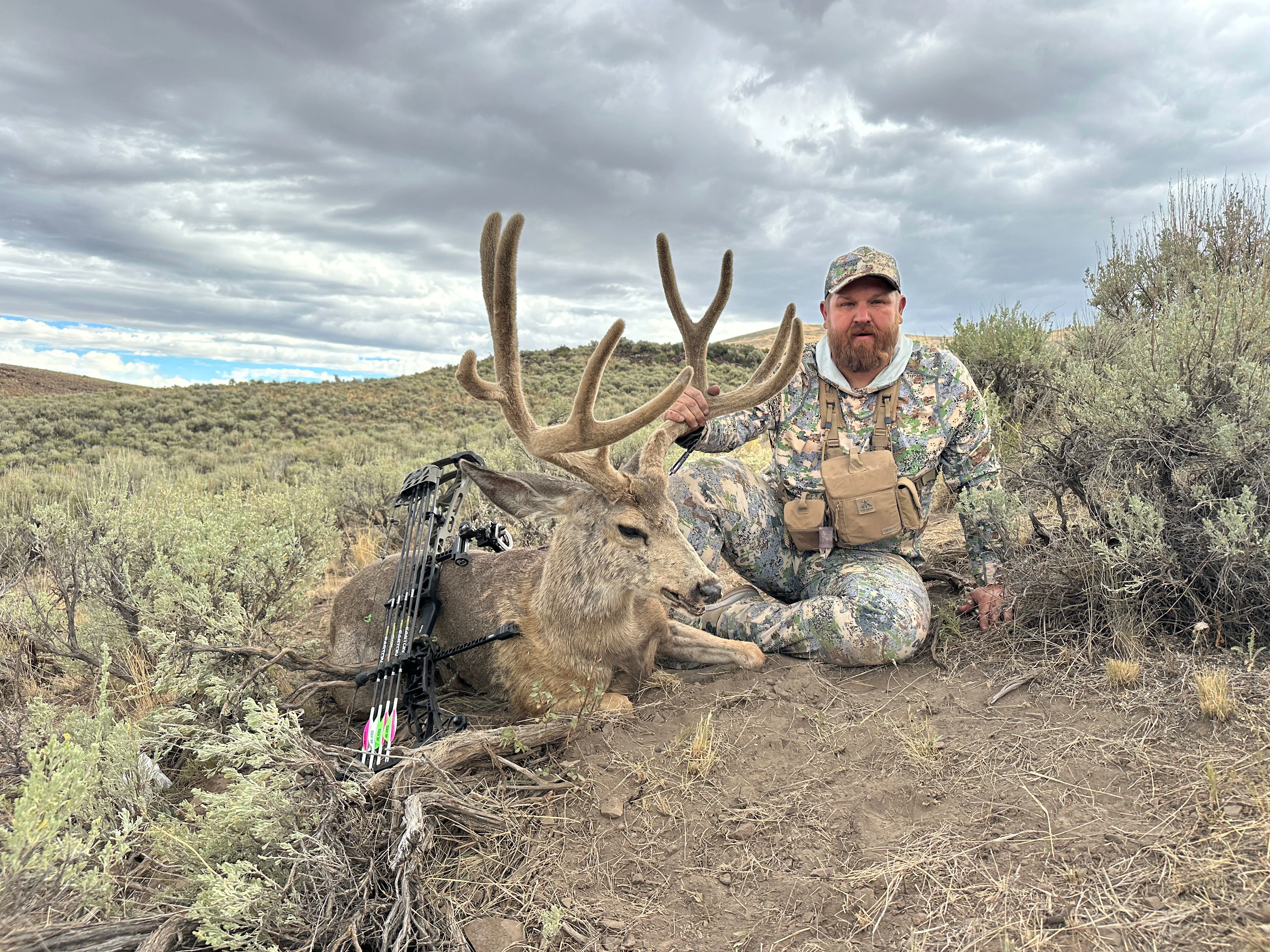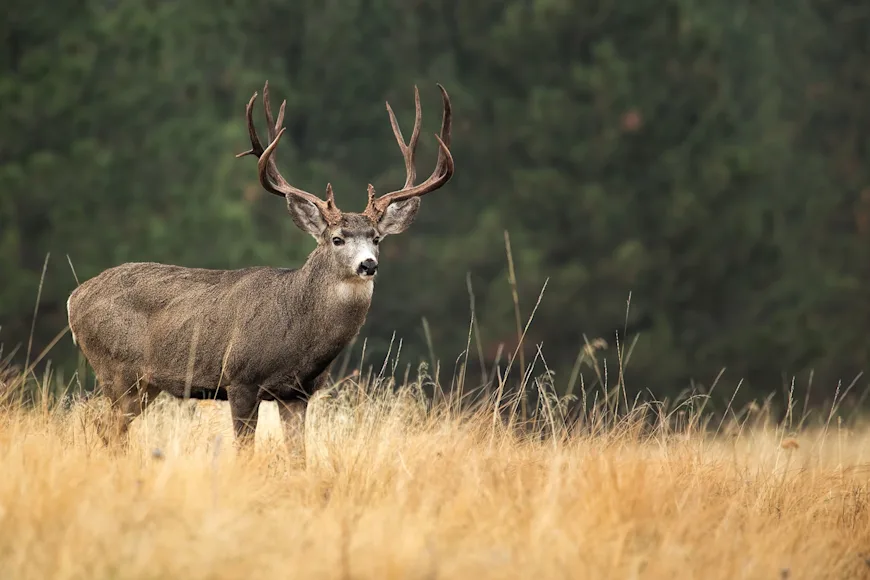From unsullied alpine basins to sage-dappled plains and brushy creeks bordering agriculture, mule deer roam much of the West, and they're one of the most fantastic deer species you can pursue. If you're looking to match wits with the western cousin of the whitetail, I've got great news: the West is vast, loaded with public dirt, and the general mule deer vibe is strong.
With that noted, you'll need to do your homework; most western states have multiple muley seasons that vary by weapon and hunt district. My advice is to start by combing the game and fish websites of these 10 banger mule deer states, then begin your quest for a wide, dark rack.
1. South Dakota
Don't ignore the Rushmore State when making muley plans. The state is rich in public land, and if you want to hit the ground running with a stick-and-string, tags are ultra-easy to come by. Rifle hunters also have multiple season options, including West and East River tags that typically kick off in mid-November and run through the first week or two of December. Hunting mule deer in the heart of their annual rut with a rifle is wonderful.
Hint: South Dakota has more than 730 Game Production Areas totaling more than 281,000 acres. Pull up your favorite digital hunting app and start prospecting.

2. Wyoming
I just returned from a pronghorn hunt in Wyoming and saw piles of mule deer. Though fires in the Big Horn Mountains and a few nasty winters are cause for concern in some areas, the Cowboy State is still a mule deer paradise. Wyoming is littered public land that's open-to-anyone, and muleys roam much of the state—from the high mountains to the lowland plains.
Hint: Use the Wyoming Game and Fish Department's Hunt Planner, and don't overlook Wyoming's Access Yes! Program.
3. Colorado
Look at mule deer entries in the Boone & Crockett record book, and you'll quickly learn that Colorado is a must-hunt mule deer state. From early archery and muzzleloader hunts in the high country to archery and rifle rut hunts in lower-elevation units, Colorado is loaded with public land, and mule deer populations, even in areas that received heavy winter kill two years ago, are on the rebound.
Hint: You don't need to enlist the help of a guide or a state resident to access any of Colorado's 42 wilderness areas. Get off the beaten path, stretch your legs, and find a giant.
4. Nevada
Like most western states, Nevada has varying mule deer terrain. The state also opens its archery season in August, allowing hunters to scratch their mule deer itch early on. This past August, I hunted BLM land in broken, rolling, mostly treeless terrain. I spied multiple shooters daily, and my buddy harvested a 183-inch velvet monster. Nevada has big mule deer, and though draw odds in most areas are tough, it's worthwhile to start accumulating points.
Hint: I recently asked a Nevada resident and mule deer kingpin for his best mule deer advice. He said, "Find the unit with the best draw odds and apply. Ignore the harvest surveys. All mule deer units in Nevada have big bucks. You may just need to look a little harder in some areas."

5. Montana
One of the few states where you can still draw a combo tag that allows you to hunt mule deer and elk simultaneously, Montana is a win. The state has over 30 million acres of state and federal lands; much of that land is excellent mule deer habitat. Montana Fish, Wildlife & Parks has a fantastic website with information to help you plan your mule deer adventure. Visit the Hunt By Species, Hunter Planner Map, and Hunting Forecasts tabs if a Montana mule deer hunt is in your future.
Hint: Over 1,200 landowners have enrolled roughly 7 million acres of land in the state's Block Management Program. Research your options based on region, make a reservation, and gain access to private land.
6. Idaho
Idaho's mule deer population has been declining, but the post-season 2023 number of 230,300 still suggests Idaho is a great location to hunt mule deer. Obtaining a tag isn't too tricky, and if you stick to the state's central mountains and southern desert regions, you should have no problems filling your tag.
Hint: Mule deer numbers in northern regions have lost ground to whitetails, and predation from wolves has played a role in population decline in these heavily forested areas of Idaho.

7. Arizona
When you think of mule deer, you think of Arizona's Strip and Kaibab Plateau. Both are world-renowned. I'm not trying to discourage you, but the chances of pulling one of these coveted tags are slim. Both are lottery draws, but their popularity puts your chances at less than 2 percent. I recommend looking outside the box. Sixty percent of Arizona is public land, and mule deer abound in most areas.
Hint: Plenty of private land is available through the state's Access Program, and if you do your research, you can hunt mule deer in Arizona every year.
9. New Mexico
The Land of Enchantment's mule deer numbers are strong despite a 2024 drought. Mule deer tags come through a draw process, but you can beat the draw by saving your coin, booking with a landowner, and getting a guaranteed voucher.
Hint: After declining in the early 2000s, mule deer numbers are rising throughout much of the state, but northern herds are particularly robust thanks to higher doe-to-fawn ratios in recent years.
Read Next: The Biggest Mule Deer Bucks of All Time, According to Boone & Crockett Records
10. Oregon
The Beaver State doesn't get much muley love, but it should. Visit the more open eastern range and access rugged areas. Tags are available through the annual draw. Don't waste your time on a 20-year-plus wait for a premium unit. Hunt the eastern archery deer units, and you should be able to pull a tag every year or every other year.
Hint: Oregon has several programs that give hunters access to private land, including the Oregon Open Fields program, the Hunt by Reservation Program, and the Access & Habitat Program. There are also dozens of private timber companies that grant hunters access.


